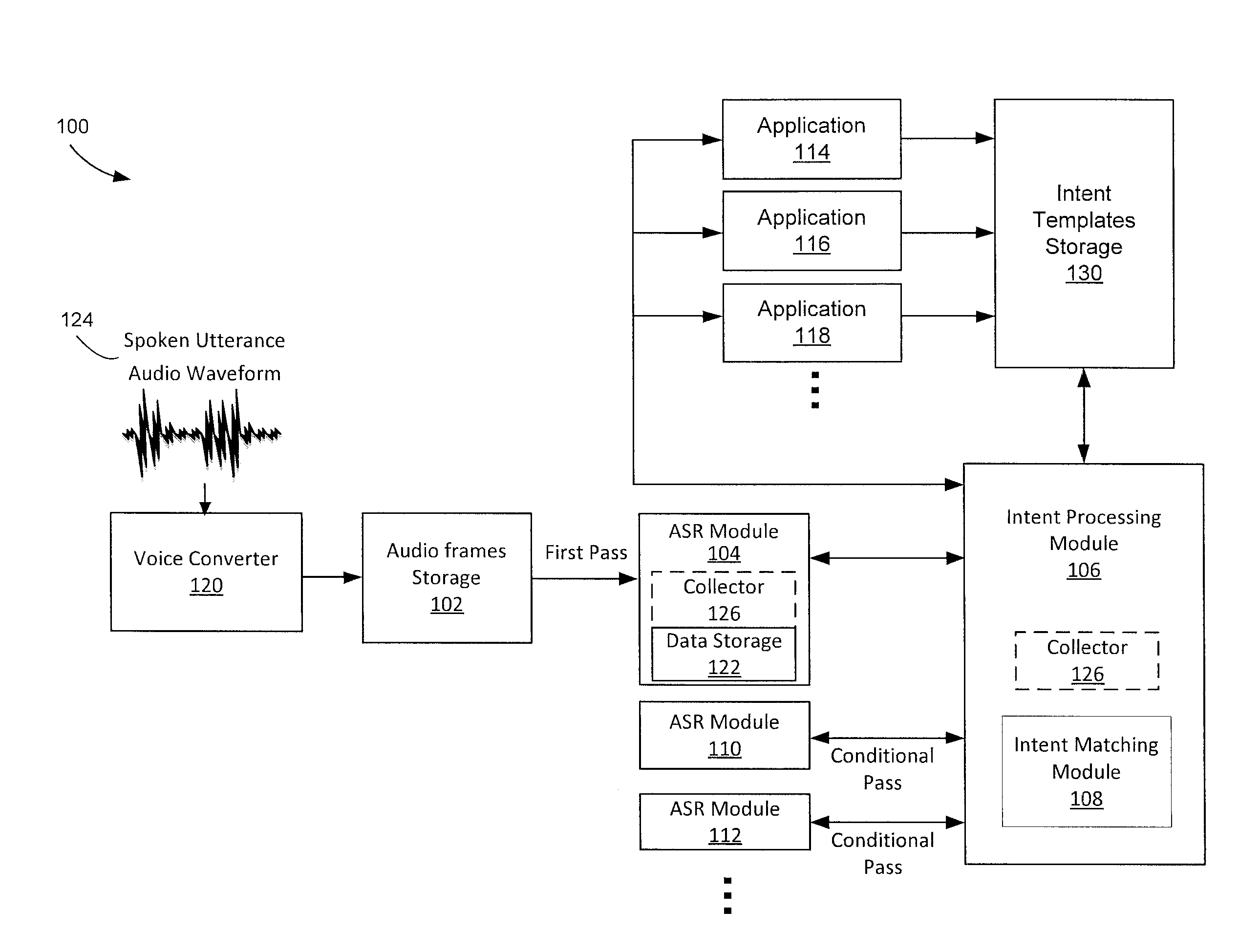Conditional multipass automatic speech recognition
a speech recognition and multi-pass technology, applied in the field of voice recognition, can solve the problems of limited application's ability to determine what has been said, and the extent of the asr vocabulary, and achieve the effect of reducing the difficulty of speech recognition
- Summary
- Abstract
- Description
- Claims
- Application Information
AI Technical Summary
Benefits of technology
Problems solved by technology
Method used
Image
Examples
Embodiment Construction
[0018]A limited or contextual grammar based automatic speech recognition module (ASR) may be all that is required by an application to interpret a given audio waveform derived from a spoken utterance. A grammar based ASR may provide high confidence recognition to a subset of the words within the audio waveform and low confidence recognition or no recognition of other words. The application receiving text results from the ASR may, in some instances, use only the high confidence recognized words. If the low confidence text is not utilized by the application there may be no need to process the audio waveform again with a more powerful ASR system. Only when the application indicates the need to utilize the low confidence recognition or unrecognized text does the computing device send the audio waveform to another ASR for a second or more pass of speech recognition. In some instances, the entire audio waveform may be re-processed by the second or more ASRs. In other instances, only the l...
PUM
 Login to View More
Login to View More Abstract
Description
Claims
Application Information
 Login to View More
Login to View More - R&D
- Intellectual Property
- Life Sciences
- Materials
- Tech Scout
- Unparalleled Data Quality
- Higher Quality Content
- 60% Fewer Hallucinations
Browse by: Latest US Patents, China's latest patents, Technical Efficacy Thesaurus, Application Domain, Technology Topic, Popular Technical Reports.
© 2025 PatSnap. All rights reserved.Legal|Privacy policy|Modern Slavery Act Transparency Statement|Sitemap|About US| Contact US: help@patsnap.com



